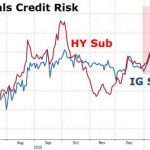
The recent rally for crude oil, came to a shuddering halt this week with Wednesday’s wide spread down candle driving oil prices firmly back towards the $50 per barrel region, and wiping out much of the gains of the last few weeks. This was against the backdrop of the weekly oil inventories, and despite recording a draw in inventories of 1.0 million barrels which was slightly lower than the forecast of 1.2 million, oil prices fell sharply as oversupply continues to dominate the complex once again. The consequent build in gasoline inventories negated the positive effects of the draw in crude oil inventories.
From a technical perspective, this lack of positive sentiment was clearly in evidence during last week’s move higher, with daily volume declining before being replaced with equal and opposite negative sentiment on the move lower, with rising volume confirming the bearish picture. The rally higher of late March and early April failed to reach the volume point of control which remains at $54.70 per barrel and marking the deepest concentration of volume on the daily chart, with deep and sustained resistance overhead in the $55.60 per barrel region and denoted with the red dotted line. The price action of this week, mirrors that of early March, with a wide spread down candle coupled with a triggering of the volatility indicator, duly sending oil lower to test minor support in the $47.50 per barrel area, a level we may see tested once again if the current bearish sentiment is duly confirmed, with a move through the psychological $50 per barrel area, then delivering this signal.
Much of course will now depend on the next scheduled meeting for OPEC which is planned for the 25th of May in Vienna where cuts in supply will once again be top of the agenda. The agreement reached in November was broadly followed by OPEC members and non-members with only Nigeria and Libya refusing to follow the guidelines, which were intended to reduce daily output by 1.8 million barrels over the first six months in 2017. The difference this time is that both OPEC and NOPEC members will be meeting on the same day, so any targets may be agreed and implemented more quickly this time. The current targets are due to expire in June but as always OPEC is caught on the horns of a dilemma, with Saudi Arabia suffering with rising deficits following two years of declining prices, and Russia also in the same boat, and given the impact of the current cuts which have had limited impact, new targets for the second half may be more aggressive. But as always, this has to be counterbalanced with the increasingly important alternative energy market, with rising prices and falling production costs creating perfect conditions for market players in this sector, and encouraging further exploration and extraction as a result. Life for OPEC is hard at present, and not likely to get easier in the future.














Leave A Comment